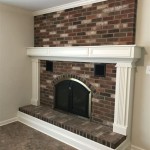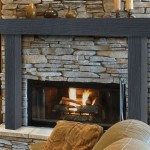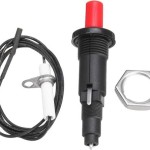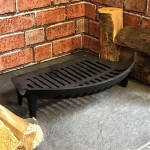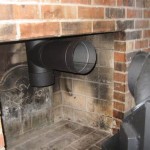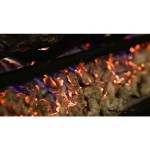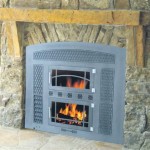Do Fireplace Heat Deflectors Work? Examining Their Effectiveness
Fireplaces, whether wood-burning, gas, or electric, are often seen as a source of supplemental heat and aesthetic charm in homes. However, a significant portion of the heat generated by a fireplace can escape up the chimney, leading to energy inefficiency. This inefficiency has spurred the development of various fireplace accessories designed to maximize heat output into the living space. Among these, fireplace heat deflectors are a popular option. Understanding whether these deflectors truly work requires a detailed examination of their design, intended function, and the relevant physics of heat transfer.
A fireplace heat deflector is typically a metal shield, often made of steel or aluminum, positioned above the fireplace opening. Its primary purpose is to redirect heat that would normally rise directly into the chimney back into the room. This redirection is intended to increase the overall heating efficiency of the fireplace by preventing heat loss and promoting convection.
The effectiveness of a fireplace heat deflector hinges on several factors, including the type of fireplace, the design of the deflector, and the individual characteristics of the room in which it is installed. Different fireplace types—wood-burning, gas, and electric—generate heat in different ways, which can influence how effectively a deflector can redistribute that heat.
Understanding How Heat Deflectors Are Supposed to Function
The theoretical function of a fireplace heat deflector is relatively straightforward. Heat rises due to convection—hot air is less dense than cold air and thus naturally ascends. Without a deflector, much of this heated air flows directly into the chimney, carrying with it a significant amount of the energy produced by the fire. A deflector is designed to intercept this rising heat and redirect it horizontally, or downwards, back into the room. By altering the direction of airflow, the deflector aims to increase the amount of time the heated air remains in the living space, thus warming the room more effectively.
The angle and surface area of the deflector are crucial to its performance. An optimal angle will effectively redirect the heat without creating excessive turbulence or restriction of airflow. A larger surface area generally allows for more heat to be intercepted and redirected, but it can also obstruct the view of the fire, which is a significant consideration for many fireplace users.
Material choice also plays a role. Metal, particularly steel or aluminum, is typically used due to its high thermal conductivity. This allows the deflector to absorb heat from the rising air and radiate it back into the room. The color of the deflector can also influence its radiative properties, with darker colors generally being more effective at radiating heat.
Factors Influencing Deflector Effectiveness
While the theory behind heat deflectors is reasonable, their actual performance can vary significantly depending on several factors. These factors relate to the fireplace itself, the room it is in, and the specific characteristics of the deflector.
The type of fireplace is a critical determinant. Wood-burning fireplaces, which rely on combustion of solid fuel, tend to produce a significant amount of radiant heat, directed outwards towards the room. While a deflector can help redirect some of the convective heat lost through the chimney, its impact may be less pronounced compared to other types. Gas fireplaces, on the other hand, often rely more on convective heat. This means that a larger proportion of the heat generated is carried by heated air, making them potentially more receptive to the benefits of a heat deflector. Electric fireplaces typically use a heating element to warm the air, and some models may benefit from deflectors, but the gains may be less noticeable due to their generally lower heat output.
The room's layout and insulation are also important. A well-insulated room will retain heat more effectively, regardless of whether a deflector is used. In a poorly insulated room, heat will quickly dissipate through walls, windows, and ceilings, diminishing the impact of any heat-saving device, including a fireplace heat deflector. The size and shape of the room also influence airflow patterns, which can affect how effectively the redirected heat is distributed. A large, open room may require a more powerful or strategically placed deflector to achieve noticeable results.
The design of the fireplace itself, particularly the damper mechanism, influences how much heat escapes up the chimney. A poorly functioning damper, or one that is left partially open, will allow a significant amount of heat to escape regardless of the presence of a deflector. Similarly, the chimney's design and condition impact airflow, and an improperly maintained or poorly designed chimney can reduce the effectiveness of the fireplace as a whole.
Potential Drawbacks and Considerations
While fireplace heat deflectors are intended to improve heating efficiency, there are potential drawbacks and considerations that must be taken into account before purchasing and installing one.
Safety is a paramount concern. Any device placed near a fireplace must be heat-resistant and properly installed to avoid becoming a fire hazard. A poorly designed or improperly installed deflector could obstruct airflow, leading to overheating or even the backflow of smoke and carbon monoxide into the room. It is essential to choose a deflector that is specifically designed for the type of fireplace being used and to follow the manufacturer's installation instructions carefully.
Aesthetic considerations are also relevant for many homeowners. A large or awkwardly designed deflector can detract from the visual appeal of the fireplace, which is often a focal point of the room. Some deflectors are designed to be more discreet than others, and it is important to consider the aesthetic impact of any device before purchasing it.
Maintenance is another factor. Fireplace heat deflectors can accumulate soot and debris over time, which can reduce their effectiveness and potentially pose a fire hazard. Regular cleaning is necessary to maintain optimal performance and ensure safety. The ease of cleaning should be a consideration when choosing a deflector.
Finally, it's important to have realistic expectations regarding the potential energy savings. While a fireplace heat deflector can help to improve heating efficiency, it is unlikely to be a magic bullet that dramatically reduces heating bills. The actual savings will depend on a variety of factors, including the frequency of fireplace use, the type of fuel used, and the overall insulation of the home. A comprehensive approach to energy conservation, including proper insulation, weatherstripping, and efficient heating systems, is likely to be more effective than relying solely on a fireplace heat deflector.
In conclusion, fireplace heat deflectors can potentially improve the heating efficiency of a fireplace by redirecting heat that would otherwise be lost up the chimney. However, their effectiveness depends on several factors, including the type of fireplace, the design of the deflector, and the characteristics of the room. It is essential to consider potential drawbacks and safety concerns before purchasing and installing a deflector. A well-chosen and properly installed deflector can contribute to a more comfortable and energy-efficient home, but realistic expectations are crucial.

Fireplace Hood Canopy Or Heat Deflector Project Small House

Fireplace Hood Canopy Or Heat Deflector Project Small House

How To Protect A Mantel

Fireplace Hoods Protect Your Tv And Décor From Heat With Stylish Deflectors Nadias Tips

Fireplace Hood Canopy Or Heat Deflector Project Small House

How Can I Prevent The Mantel Above A Gas Fireplace From Getting Hot Home Improvement Stack Exchange

Fireplace Hoods Heat Deflectors Custom Page 2

Simond Fire Back 20 W X 16 H Firebacks For Fireplace Cast Iron Reflector Plate Heat Reflection And Wall Protection

Homesaver Mantel Shield Black

Reducing Heat Above Gas Fireplace Insert

